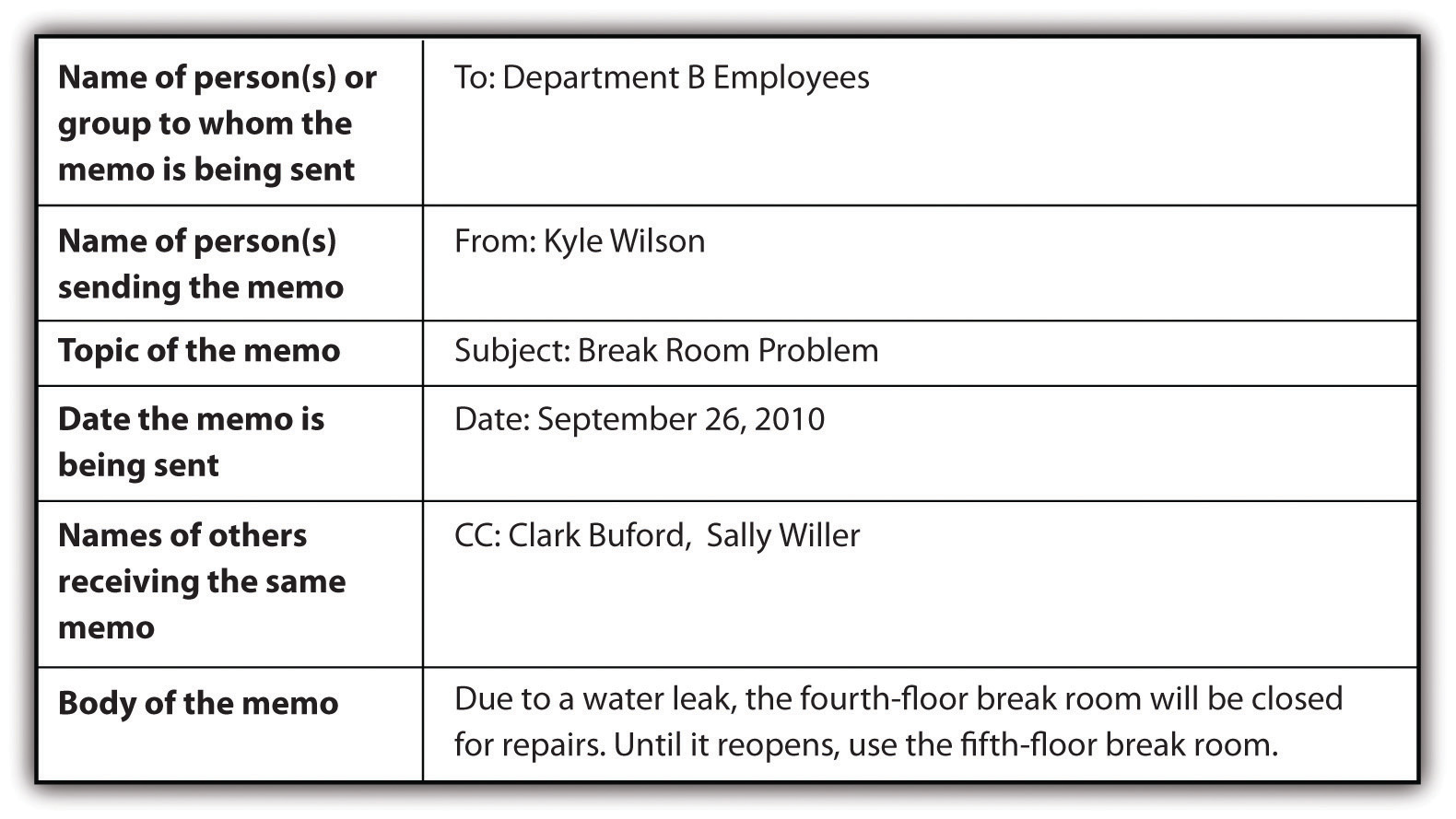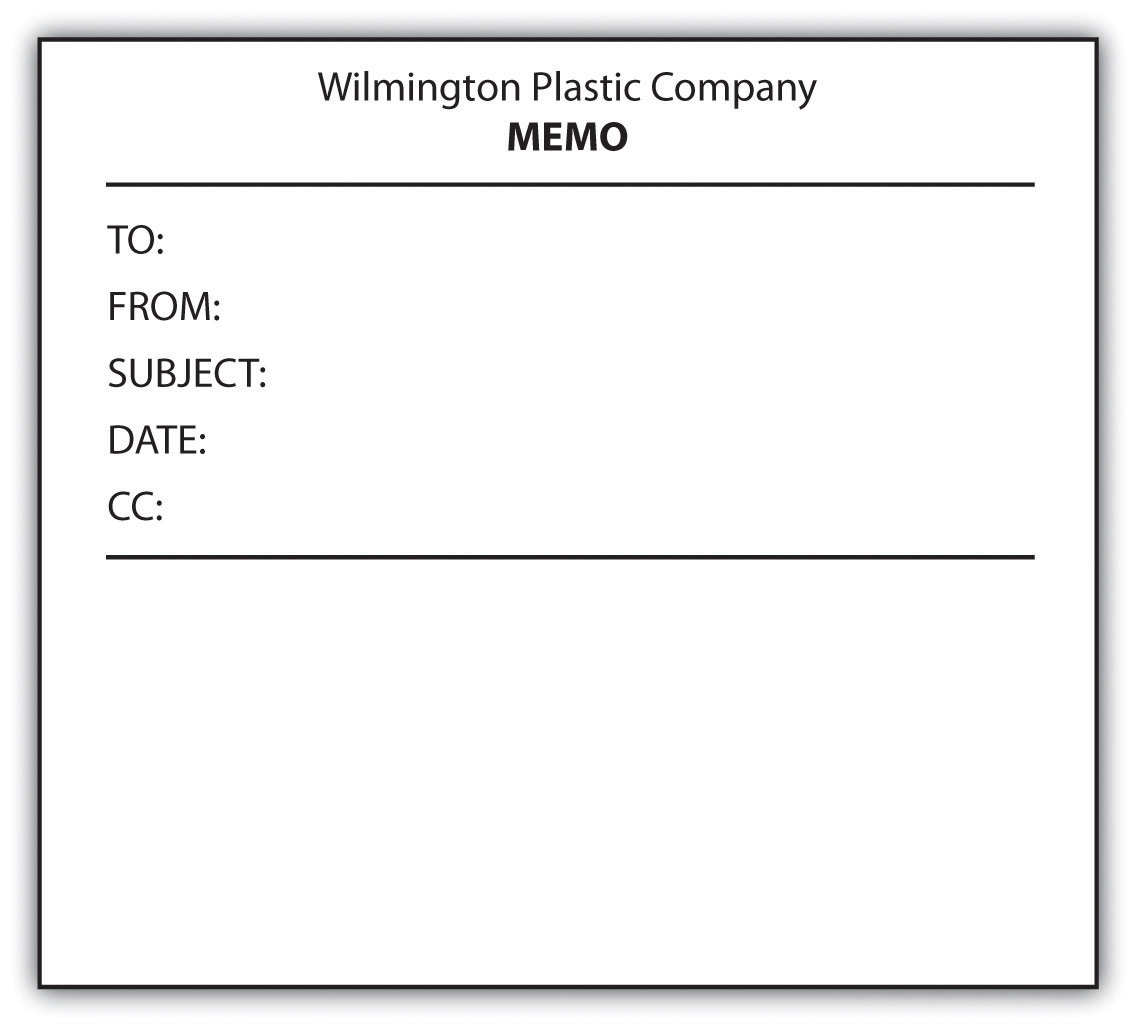This is “Composing Memos”, section 12.3 from the book Writers' Handbook (v. 1.0). For details on it (including licensing), click here.
For more information on the source of this book, or why it is available for free, please see the project's home page. You can browse or download additional books there. To download a .zip file containing this book to use offline, simply click here.
12.3 Composing Memos
Learning Objectives
- Recognize the typical usage for memos.
- Understand the parts of a memo.
A memo is less formal than a business letter but more formal than an e-mail. Memos are usually sent within a company addressing a single issue or meeting and are typically short. A common feature of memos is the heading followed by a colon. Memos typically include the following set components.

Companies often have blank memo forms in digital and hard-copy formats.
Figure 12.1 Example of a Blank Memo Form

Key Takeaways
- Typically memos are short, are used for internal company matters, and cover a single issue.
- Typically memos include six parts: to, from, subject, date, carbon copy, and body text.
Exercises
- Make a list of five reasons a person might use a memo at work instead of sending an e-mail or mailing a business letter to employees.
- Create a memo form in your computer. Use your form to create a handwritten memo and a typed memo.
- Use a memo template for the next writer’s memo you submit with a college writing project. (See Chapter 5 "Planning" for more on how to develop a writer’s memo and a statement of purpose that describes message, audience, voice, attitude, reception, and tone.)




